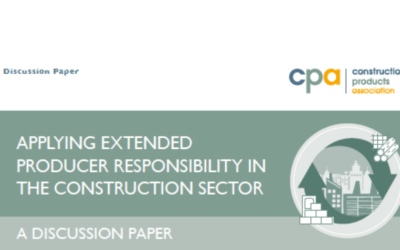Sustainability in the Finishes and Interiors Sector
FIS is committed to taking a pro-active lead, not just in supporting the UK ambition to net zero carbon by 2050, but delivering profound transformation within our supply chain on all aspects of ethical and environmental sustainability.
In this toolkit we look at some of the key actions that you can take and also some of the wider sector initiatives that can support your business in setting a sustainability strategy. The aim is to support companies in meeting the ethical and environmental aspects of sustainability considered from the three dimension of planet, people and profit across the entire construction supply chain. Definitions of sustainability do vary, but focus is on where our sector can make a positive impact in line with the UN Sustainability goals and the Net Zero agenda in the UK.
FIS 10 Golden Rules for Waste Reduction
Introducing Sustainability
General Principles
Relevant Literature
Reuse
FIS Pre-Cycle Agreement
The FIS PreCycle agreement provides a direct link between the manufacturer and user of a construction product to ensure that at end-of-service-life, the material can be recovered, repurposed, recycled or processed in the most environmentally way by keeping the product at its highest value application and importantly avoiding landfill.
Sector Specific Activities
Flooring
Plasterboard
Ceilings
Training
FIS has partnered with the Supply Chain Sustainability School
Zero carbon resources for finishes and interiors
Free-to-access training materials, videos, webinars and resources.
FREE sustainability learning pathway “‘FIS Sustainability Awareness: Doing Business Better”.
Start your Net Zero journey with a free assessment
Working with the Supply Chain Sustainability School FIS supported the development of this new assessment is based on what the company is doing in sustainability rather than their knowledge. We would like to encourage our members to use this tool. The plan longer term will be to use the tool to map our collective journey to net zero and help members benchmark their own efforts. calculating your organisational footprint and assessing your companies capability.
More resources to help you understand sustainability in the finishes and interiors sector
Sustainability related to your activities
Sustainability related to your organisation
Sustainability Headlines
NHP Supplier Guide
The New Hospital Programme (NHP), which is developing 48 hospitals by 2030, has published the NHP Supplier Guide. The guide is aligned to the Construction Playbook and sets out what is important to the NHP ‐ better, faster and greener procurement ‐ and what it...
Government’s Energy Strategy Published
The Government has released its British Energy Security Strategy with the aim of providing secure, clean and affordable energy for Great Britain. It sets out how the deployment of wind, nuclear, solar and hydrogen will be accelerated, which could see 95% of...
Construction hits first target on roadmap to Net Zero
The construction sector has hit its first target in its campaign to drive carbon out of the sector. Last year the Construction Leadership Council launched its CO2nstruct Zero industry-change programme with the aim of eradicating carbon from buildings and...
Applying EPR in the construction products sector
The Construction Products Association has published a discussion paper on extended producer responsibility (EPR): Applying EPR in the Construction Sector Discussion Paper (constructionproducts.org.uk). This discussion paper seeks to explore the applicability of the...
Scotland transitioning at pace to Net Zero
Are you a leader working in the Construction, Manufacturing or Transport sectors seeking to drive and influence meaningful change in relation to Net Zero ambitions? Fully funded, CPD certified training is now available to ensure that you are upskilled with climate...
Embodied Carbon of Construction Industry Makes it to Parliament
The UK Government has committed to reduce carbon emissions by 100% by 2050 compared to 1990. Buildings are responsible for approximately 40% of CO2eq emissions in the UK in relation to the energy they use during their use. The impact of construction, which includes...
FIS Events
Path to Net Zero
The CLC Roadmap to Recovery has laid out proposals to secure the future of construction, while setting the industry on a sustainable path towards recovery. But what does this mean to projects in our sector.
Calculating your carbon footprint
As the industry is becoming more aware of the urgency to work towards net zero carbon targets, it is important that organisations start measuring their carbon footprint.






